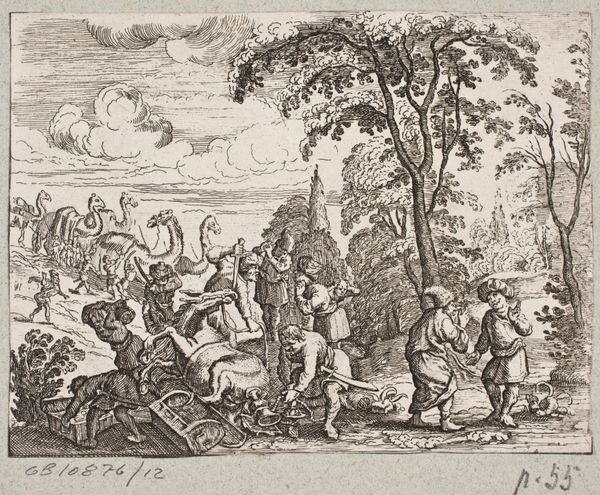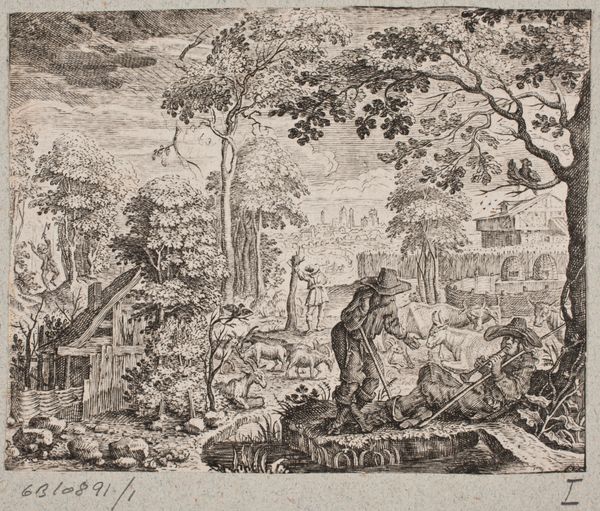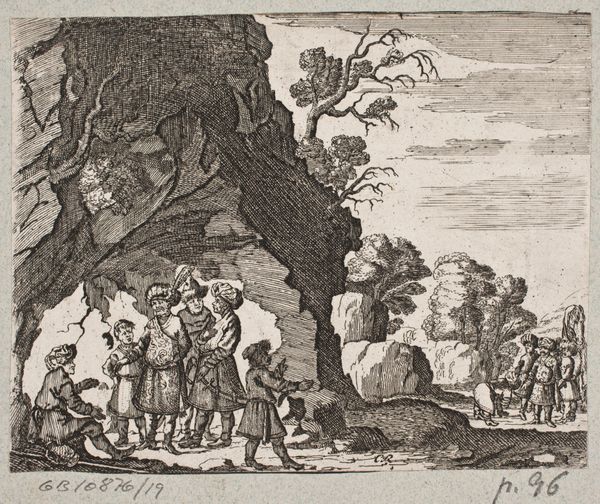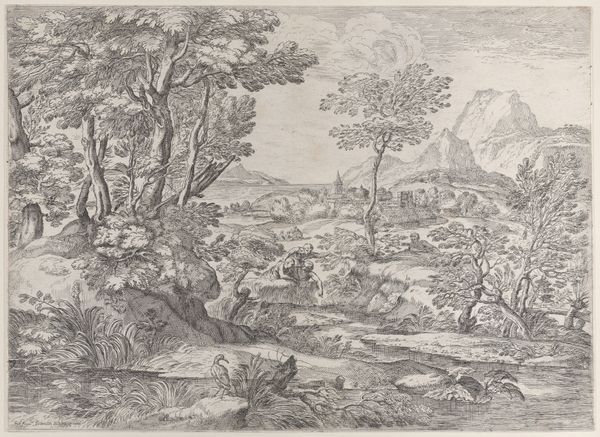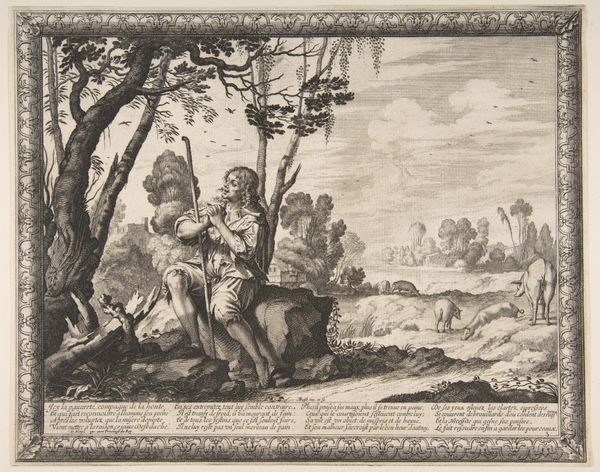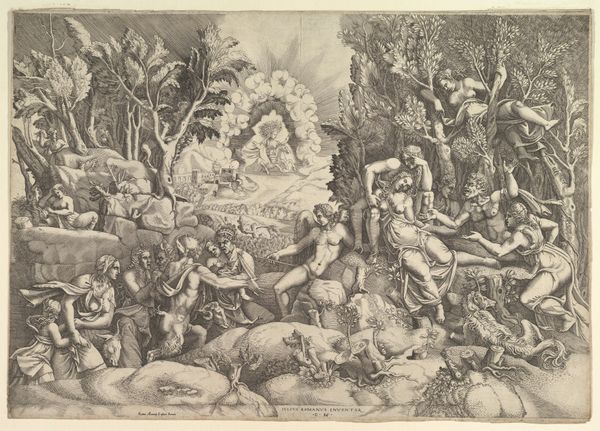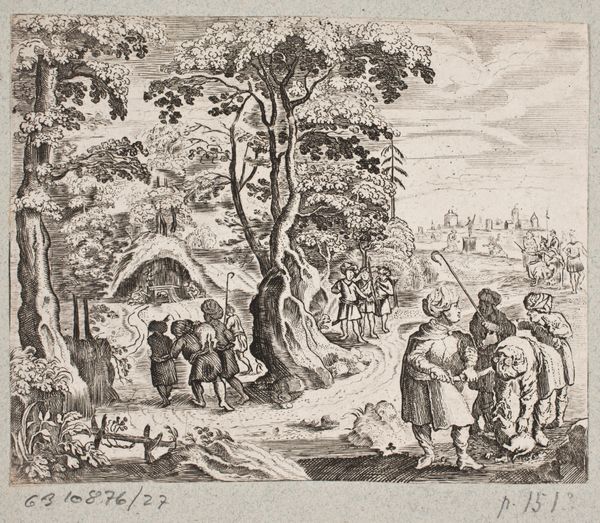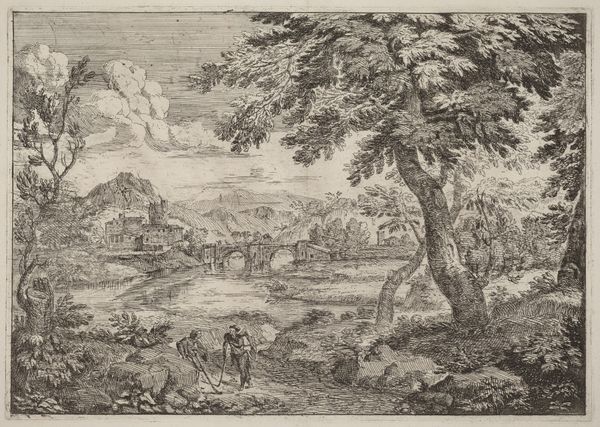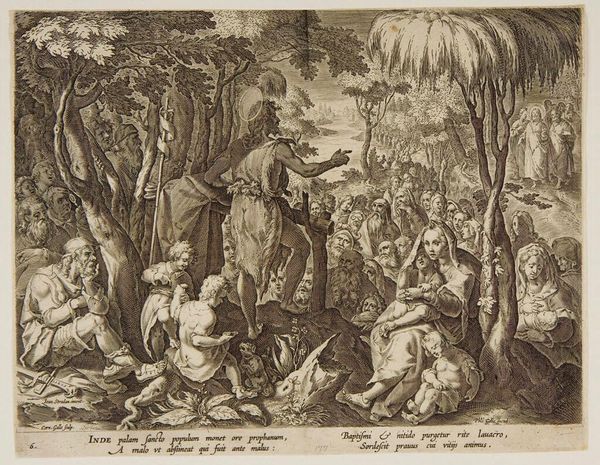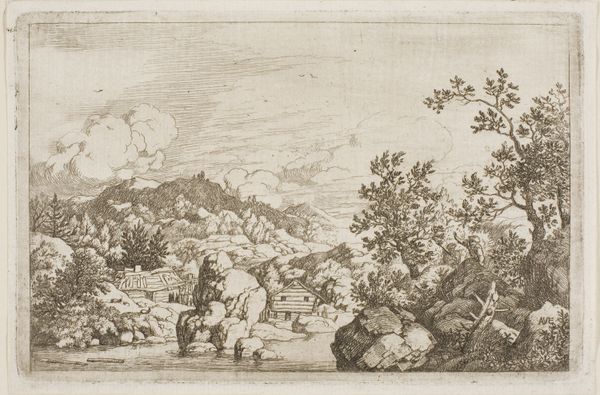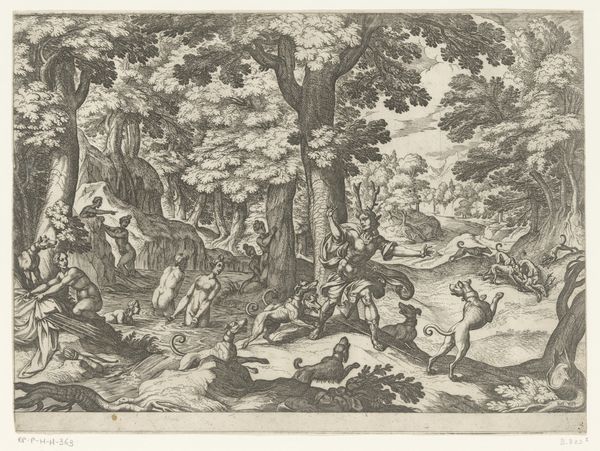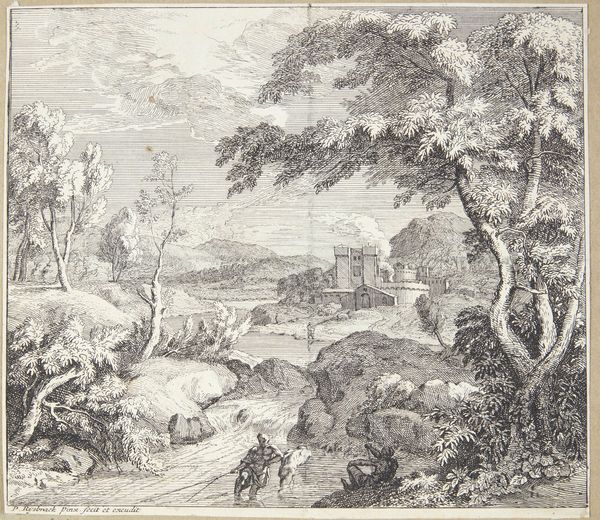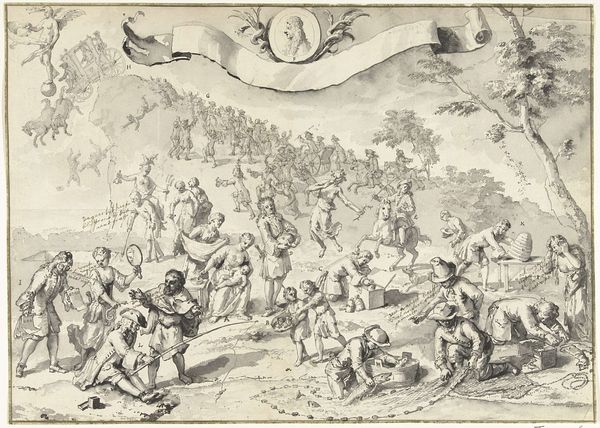![Illustration til Adam Olearius, “Persianischer Rosenthal von einem Sinnreichen Poeten Schich Saadi […]”, Schleswig 1660 by J. Muller](/_next/image?url=https%3A%2F%2Fd2w8kbdekdi1gv.cloudfront.net%2FeyJidWNrZXQiOiAiYXJ0ZXJhLWltYWdlcy1idWNrZXQiLCAia2V5IjogImFydHdvcmtzL2Y5YmJhZDE3LWViNTktNDFjZC1iODJiLTllOWE2OWFiMzI1Ni9mOWJiYWQxNy1lYjU5LTQxY2QtYjgyYi05ZTlhNjlhYjMyNTZfZnVsbC5qcGciLCAiZWRpdHMiOiB7InJlc2l6ZSI6IHsid2lkdGgiOiAxOTIwLCAiaGVpZ2h0IjogMTkyMCwgImZpdCI6ICJpbnNpZGUifX19&w=3840&q=75)
Illustration til Adam Olearius, “Persianischer Rosenthal von einem Sinnreichen Poeten Schich Saadi […]”, Schleswig 1660 1660
0:00
0:00
drawing, print, etching, ink
#
drawing
#
ink drawing
#
baroque
#
pen drawing
# print
#
etching
#
landscape
#
ink
#
genre-painting
Dimensions: 102 mm (height) x 135 mm (width) (bladmaal)
Editor: Here we have J. Muller's etching from 1660, titled "Illustration til Adam Olearius, \u2018Persianischer Rosenthal von einem Sinnreichen Poeten Schich Saadi [\u2026]\u2019, Schleswig 1660." It feels like a scene pulled straight from a storybook. The detail is incredible for such a small print. What grabs your attention when you look at this? Curator: Well, for me, it’s the fascinating clash of cultures being represented. Look at the clothing, the landscape, and the leisure activity! It suggests a European artist's vision of a Persian scene, filtered through both artistic license and perhaps, some level of cultural understanding – or misunderstanding. What do you think they might be doing? What story is being told, if any? Editor: They look like they are relaxing on some kind of elaborate carpet enjoying fruits from the garden. In the distance it almost appears to be a waterside town with dramatic terrain in the background. But in the middle ground it looks as if children are at play, though perhaps violently so given one has been forced to the ground! It’s idyllic but hints at potential disorder just beneath the surface. What do you make of the technique of hatching used throughout? Curator: Exactly! The hatching is key. See how Muller uses these delicate lines to create not just form, but also a sense of light and shadow? The composition directs the eye towards this central event playing out. It's more than just illustration. To me, it's a reflection on how different cultures might interpret leisure, power dynamics, and even storytelling itself. Muller might be mirroring European attitudes towards these unknown or foreign cultures in subtle but significant ways. It begs the question of who holds power over a story, not just in the scene, but in the telling of it. Editor: I never considered it from that angle. That this "genre painting" may itself be a commentary on cross-cultural interpretations rather than just some idyllic day in Persia. Curator: Precisely! It's like holding a mirror to the act of observation itself. Art invites a dialogue between the artwork, artist, viewer, and the broader context. What at first glance seemed like a whimsical story now leaves me feeling intrigued. Editor: Me too!
Comments
No comments
Be the first to comment and join the conversation on the ultimate creative platform.
